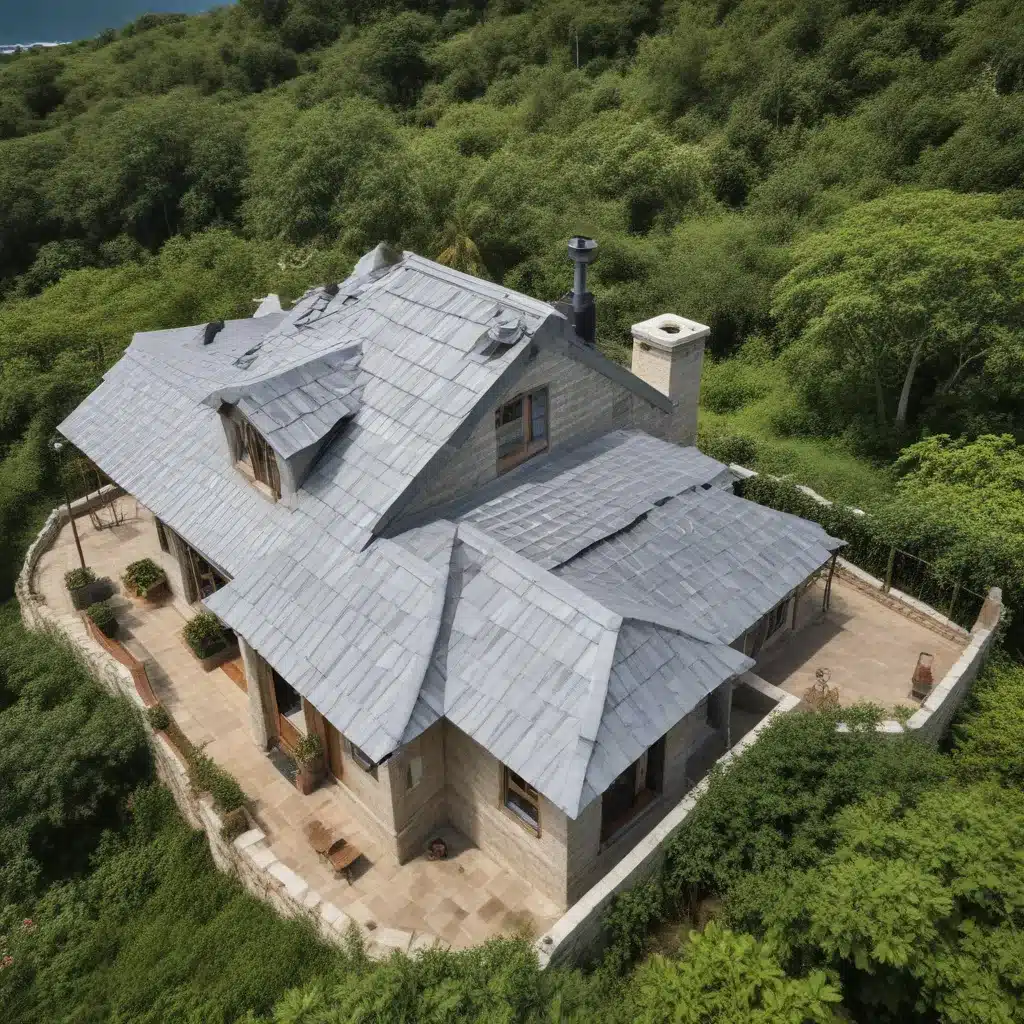
The Cook Islands, a vibrant Polynesian nation in the South Pacific, has long been renowned for its rich cultural heritage and stunning natural landscapes. Yet, beyond its captivating artistic traditions and idyllic island vistas, the Cook Islands have also emerged as a trailblazer in the realm of eco-friendly roofing solutions. As a seasoned cultural historian and curator deeply familiar with the Cook Islands’ legacies, I am thrilled to delve into the fascinating intersection of this island nation’s heritage and its forward-thinking approach to sustainable building practices.
Harnessing the Wisdom of the Past
The Cook Islands’ cultural identity is deeply rooted in a profound reverence for the natural world and a harmonious coexistence with the environment. This ethos has long been reflected in the traditional architectural styles that have graced these islands for generations. One such example is the iconic thatched-roof structures, which have been a hallmark of Cook Islands design for centuries. These roofs, meticulously crafted from local materials like coconut leaves, pandanus, and reeds, not only embody the island’s aesthetic sensibilities but also demonstrate an inherent understanding of sustainable building principles.
“The thatched roofs of the Cook Islands are more than just picturesque – they represent a rich tradition of environmental stewardship and innovation,” explains Teuira Akaraiti, the curator of the Cook Islands Library and Museum. “These structures were designed to be in perfect harmony with the local climate, providing natural insulation, ventilation, and water-shedding capabilities.”
Indeed, the thatched roofs of the Cook Islands have long been recognized for their exceptional cooling properties, a crucial consideration in the region’s tropical climate. By reflecting sunlight and promoting airflow, these roofs effectively reduce the need for energy-intensive air conditioning, making them a remarkably eco-friendly solution.
Embracing Modern Innovations
While the Cook Islands’ cultural heritage has long been a source of inspiration, the island nation has also enthusiastically embraced modern sustainable roofing technologies. One such innovation that has garnered significant attention is the innovative SunRoof system, a 2-in-1 solar roofing solution that seamlessly integrates photovoltaic cells into the roof structure.
“The SunRoof system is a game-changer for the Cook Islands,” enthuses Akaraiti. “It allows us to harness the power of the sun while maintaining the aesthetic beauty and traditional appeal of our island architecture. It’s a perfect fusion of the old and the new, all wrapped up in a highly efficient and eco-friendly package.”
The SunRoof system, developed by the Swedish company of the same name, boasts an impressive array of features that make it an attractive option for the Cook Islands. With its sleek, integrated design and high energy-generation capacity, the SunRoof offers a cost-effective solution that eliminates the need for traditional roofing materials and separate solar panels. This not only enhances the overall aesthetic of the building but also reduces the carbon footprint associated with construction and ongoing energy consumption.
“The beauty of the SunRoof system lies in its ability to adapt to our unique architectural styles,” Akaraiti explains. “Whether it’s a traditional thatched-roof structure or a modern, eco-conscious design, the SunRoof seamlessly integrates to provide both form and function.”
Embracing Eco-Friendly Roofing Alternatives
Beyond the innovative SunRoof solution, the Cook Islands have also explored a range of other eco-friendly roofing options that blend traditional aesthetics with sustainable performance. One such example is the Palmex synthetic thatch roofing system, a durable and maintenance-free alternative to natural thatch materials.
“The Palmex products have been a game-changer for us,” says Akaraiti. “They allow us to preserve the iconic look and feel of our traditional thatched roofs, but with the added benefits of enhanced durability, fire resistance, and zero maintenance requirements.”
Manufactured by the Canadian-based Palmex International, these synthetic thatch tiles are crafted from high-quality, environmentally friendly materials that mimic the natural appearance of the island’s traditional roofing materials. The Palmex system not only reduces the environmental impact associated with the over-harvesting of natural resources but also provides a practical, long-lasting solution for homeowners and businesses alike.
Fostering a Sustainable Future
The Cook Islands’ embrace of eco-friendly roofing solutions is not merely a matter of aesthetic appeal or practical necessity – it is a reflection of the island nation’s deep commitment to environmental sustainability and preserving its cultural heritage. “At the heart of our efforts is a desire to balance progress with preservation,” Akaraiti explains. “We want to ensure that the Cook Islands’ architectural traditions continue to thrive, while also leveraging innovative technologies that can reduce our carbon footprint and safeguard the natural environments we hold so dear.”
To this end, the Cook Islands Library and Museum has been at the forefront of educational initiatives, showcasing the island’s sustainable roofing solutions and their cultural significance. Through interactive exhibits, workshops, and community outreach programs, the museum aims to inspire locals and visitors alike to adopt eco-friendly building practices that honor the Cook Islands’ rich heritage.
“By sharing the story of our thatched roofs and cutting-edge solar technologies, we hope to ignite a passion for sustainable living that extends far beyond the realm of architecture,” Akaraiti says. “After all, the Cook Islands’ journey towards a greener future is not just about roofs and buildings – it’s about preserving the very essence of our island way of life for generations to come.”
As the Cook Islands continue to lead the way in eco-friendly roofing solutions, their legacy serves as a shining example of how traditional wisdom and modern innovation can converge to create a more sustainable, culturally-vibrant future. From the iconic thatched roofs to the cutting-edge SunRoof system, the islands’ enduring commitment to environmental stewardship and cultural preservation stands as an inspiration to us all.

